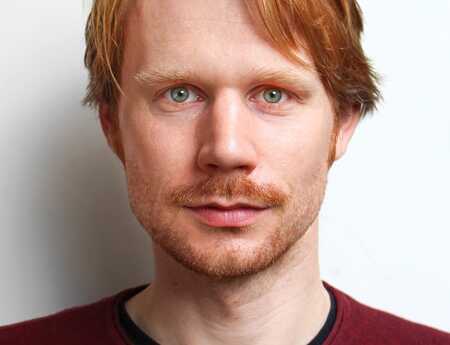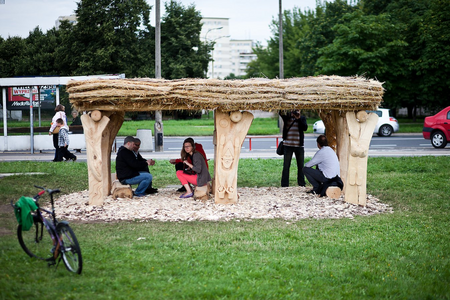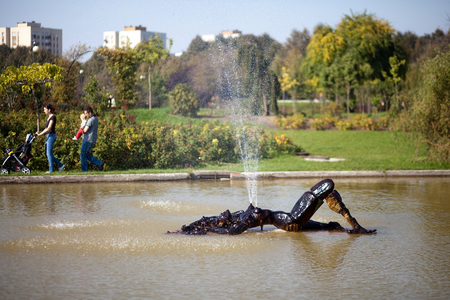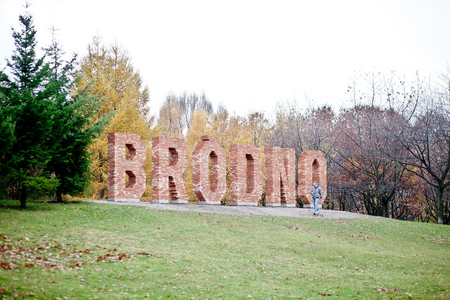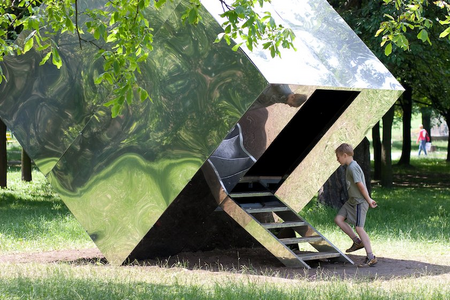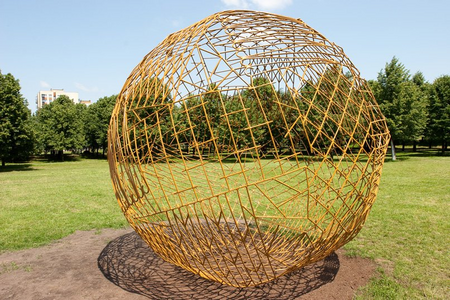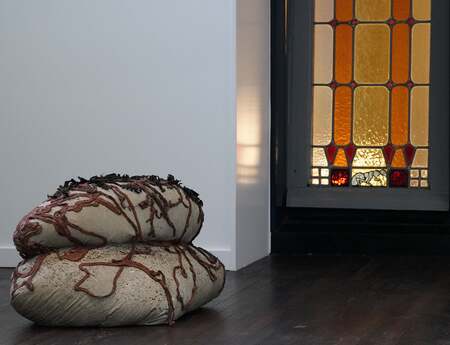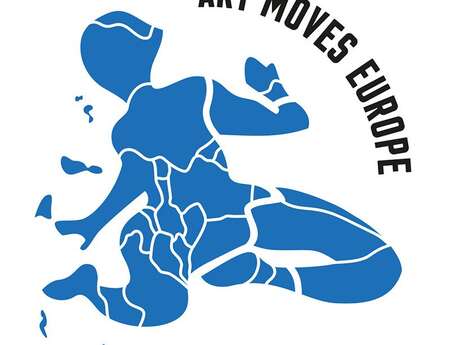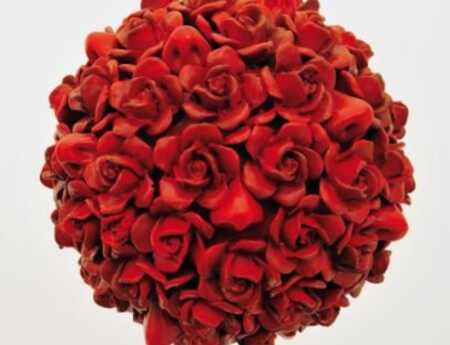Fields of Imagination and Interaction: The Bródno Sculpture Park
What are the functions of a sculpture garden?
Striving to reinvent the role of public art, Paweł Althamer initiated a unique project for social sculpture—an intriguing sculpture park which has been developed in cooperation with the residents of the Bródno neighbourhood in Warsaw since 2009.
When thinking about exhibitions, we tend to imagine closed spaces. Artworks are meticulously placed within white, pristine surroundings, security guards roam polished floors, intense light illuminates the rooms. Alternatively, we may be visiting a disused factory or another re-purposed space in a gentrified neighbourhood. Does any other suitable exhibition environment for contemporary art exist?
Placing artworks outdoors exposes them to changeable, often risky weather conditions. At the same time, it grants them incomparable and exciting surroundings. Private collectors and public institutions use buildings and vast green environs for display purposes. Commercial galleries open sculpture gardens adjacent to their spaces. Non-contemporary art sites invite artists to their grounds: Versailles is the most celebrated example, with Olafur Eliasson and Anish Kapoor turning the historic park into a contemporary art rollercoaster with surprisingly amazing results. Also art fairs organise open-air sections: be it sunny Miami Basel or cloudy Frieze London. The latter has employed the Regent’s Park as an exhibition platform since 2005. Each year, the gardens become a hub of sculptures and installations created by international sky-rocketeers like Lynn Chadwick, Gianpietro Carlesso, or Richard Long.
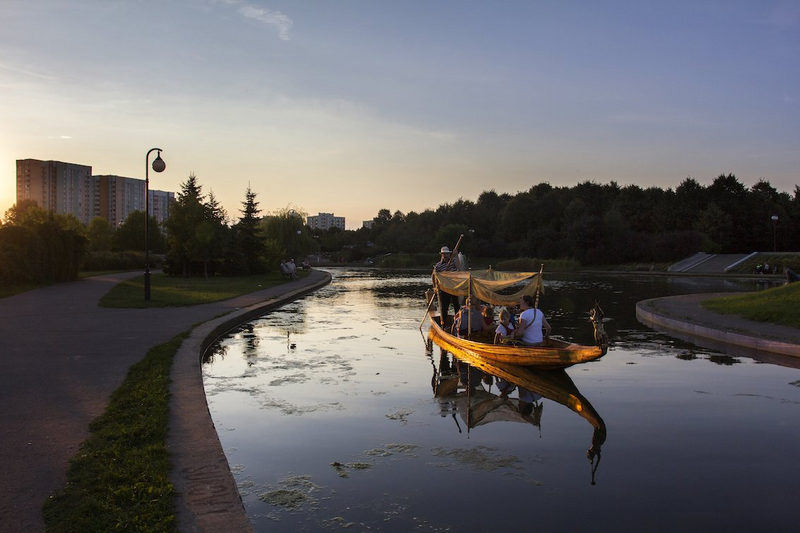
Art in nature or the city?
Refreshingly different, a visit to a sculpture park allows for experiencing art from a different angle. Every season and every hour bring different colours and lighting effects, constantly surprising the visitors with the marvellous interplay between artworks and natural space around them. Still, the vast majority of sculpture parks have been created using one template. The place is a picturesque and usually remote location. The surroundings are well-cared for, nearly idyllic; the sculptures majestic and—more often than not—massive. However, there is an exception to that rule. Situated in a residential district of Warsaw, an atypical sculpture park invites art explorers who dare to look for unconventional sculptures.
Initiated by Paweł Althamer, one of the most prominent Polish sculptors and performers, the Bródno Sculpture Park has brought together artists, local residents, city council officers, and art institutions. Having a noble goal in common—to create an inclusive space connecting nature, sculpture, and local identity—the originators have turned the park into an evolving art organism that has been expanding gradually since 2009. Althamer, who grew up in the Bródno district and still lives there, has not been put off by the dreary look of the communist-era buildings encircling the park. On the contrary, he has anticipated that the unusual location could play to his advantage and has channeled the energy towards invigorating and enlivening the neighbourhood. Not surprisingly, the park has quickly attracted considerable attention for its strategic focus on site-specific sculptures and collaborative practice.

Photo: Bartosz Stawiarski / Museum of Modern Art Warsaw
Centred around the notion of public art, the garden is a one-of-a-kind example of implementing the formula of social sculpture on a mass scale. Each work has a different character, durability, style, and level of functionality. Carefully woven into the natural surroundings, they serve as meaningful conversation starters with the tall blocks of flats always visible in the distance. Jens Haaning, Susan Philipsz, Youssouf Dara, Olafur Eliasson, Katarzyna Przezwańska, Monika Sosnowska, Ai WeiWei, Rirkrit Tiravanija, and many other celebrated as well as lesser-known artists have contributed to the project so far.
Direct collaborations and social interactions
There are few works co-created by Paweł Althamer himself. Sylwia (2010)—a cast bronze sculpture of chimera placed in the water reservoir—is a fruit of collaboration between Althamer and his long-time associates: the Nowolipie Group. Since 1995, the artist has been doing pottery workshops with people suffering from multiple sclerosis, for whom art was a form of therapy and rehabilitation. For the park, they together created a fountain in the form of a snake-haired woman lying on the water.
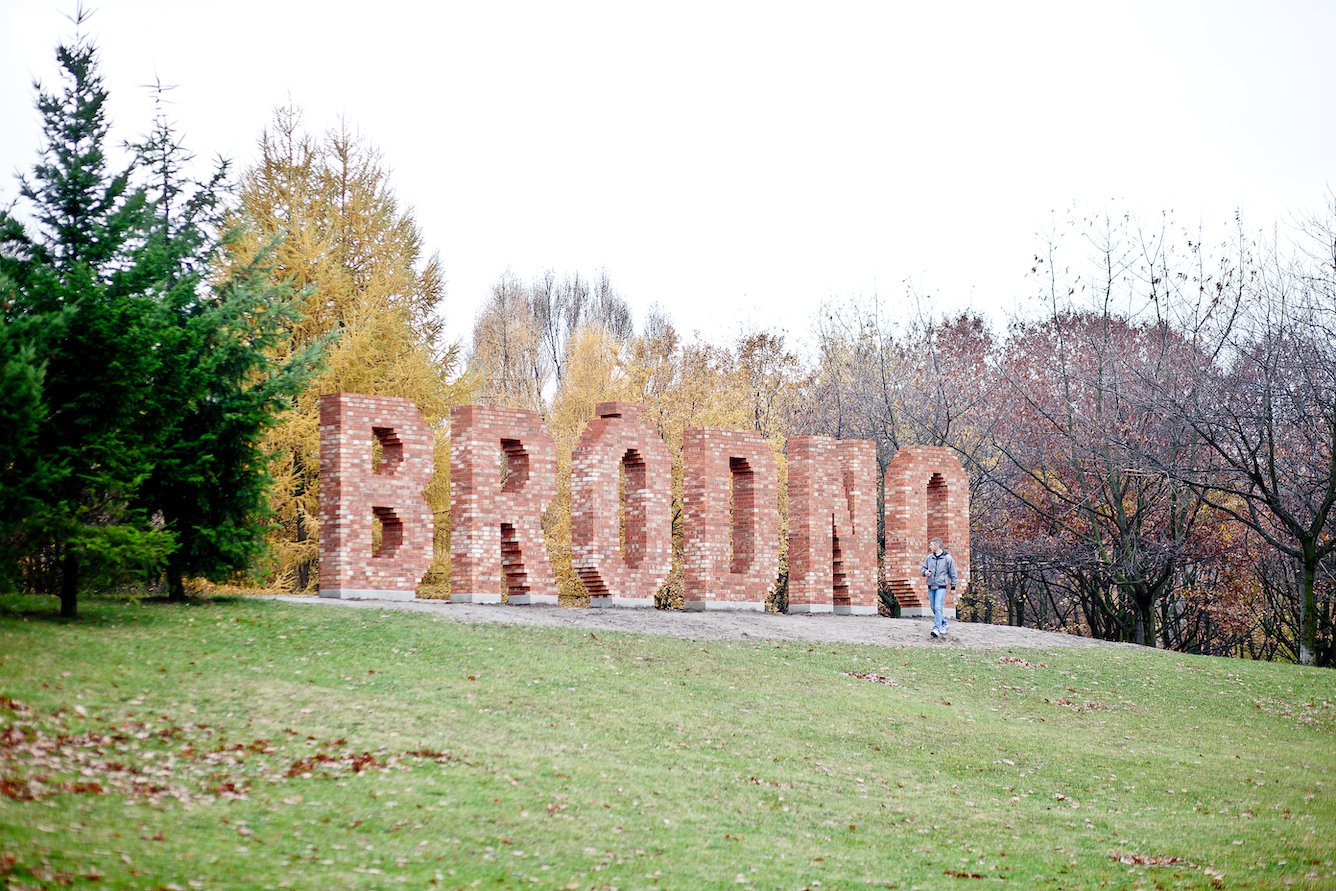
Photo: Bartosz Stawiarski / Museum of Modern Art Warsaw
Toguna (2011), in turn, is a fruit of Althamer’s collaboration with Youssouf Dara, an artist from Mali. The two sculptors recreated an important meeting place for the Dogon tribe, which Dara comes from. A significant element of the Dogon culture, a toguna is a wooden shed with a thick roof based on sculpted columns. While in Mali it is a site of village gatherings, the structure in Warsaw is not only a potential place for social integration, Toguna also functions as an extraordinary bus stop.
When Jans Haaning, a Danish artist primary interested in the issues of national identity, proposed a massive installation made of thousands of red bricks, local residents voiced their deep dismay. In stark contrast to the iconic Hollywood one, a rather inglorious sign saying BRÓDNO placed atop a small hill seemed a mockery of the neighbourhood. “It’s important to me that the sculpture in Bródno is made of bricks,” the artist argued, “this comes from my, perhaps naive, perspective on social democracy, from which I see Poland in relation to a celebration of collective work and effort”. Eventually, after further consultations, the residents embraced the sculpture which quickly became one of children’s favourite spots to play hide-and-seek in the park.
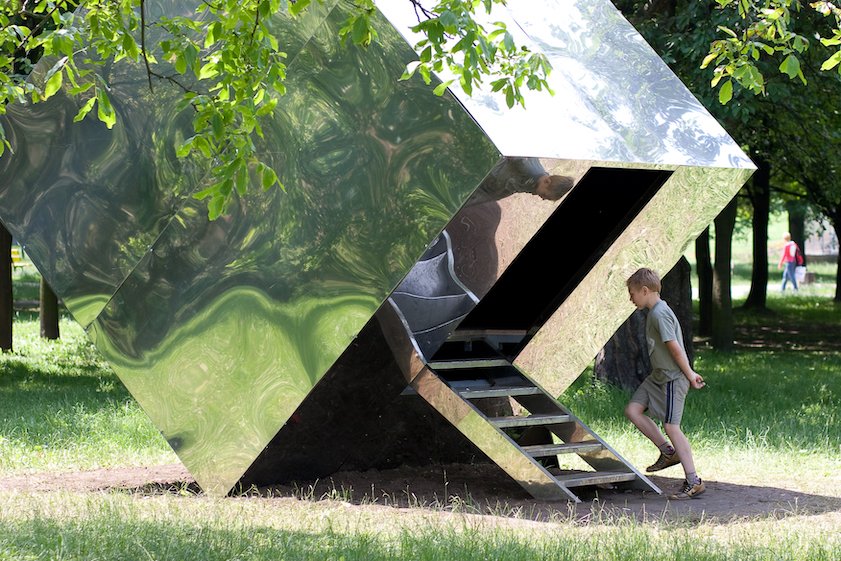
Photo: Bartosz Stawiarski / Museum of Modern Art Warsaw
Cup of tea?
Artists contributing to the project have been aware that to initiate interaction often only a little excuse is needed. Would a cup of tea (or coffee) be enough? Rirkrit Tiravanija, a Thai artist whose influential practice has grown out of relational aesthetics, proposed a pavilion for one or two people that can be used for having a hot drink, but also as a shelter from rain. An overturned tea house with the coffee maker is a steel-covered cube reflecting nearby trees and grass. Currently run by Michał Mioduszewski, an artist and social psychologist, the teahouse serves as a meeting point—the smallest culture venue in Warsaw. You can have a drink when visiting the park and ponder why your wallet won’t help you pay for it. In fact, the only accepted currency is creativity: be prepared to dance, sing, or draw something in return for your beverage.
While all sculptures are site-specific, Monika Sosnowska’s Grating (2009) is a compelling dialogue with the local safety measures Bródno residents have used to deter burglars. The artist, whose interests lies within modernist heritage, took a closer look at shapes and patterns of gratings installed to protect windows of local shops and ground floor apartments. Placed directly on the ground, Grating is a 4-metre diameter sphere made of ornamentally shaped reinforcement bars in diverse shapes. Sosnowska, who gained international recognition for using existing architectural elements and giving them new meanings, created a sculpture that is not only a playful object adored by the youngest visitors, but also triggers discussions about grassroots shaping of the common and private spaces by city dwellers.
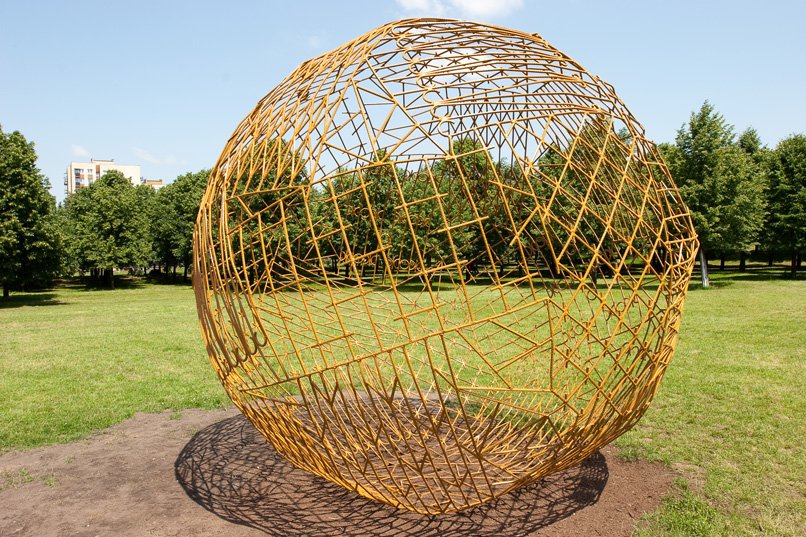
Photo: Bartosz Stawiarski / Museum of Modern Art Warsaw
Conveying the unspoken
Some say that visiting the Bródno Sculpture Park reveals secret knowledge about the relationship between art and society. Exploring this inimitable garden is like stepping onto a magical discovery path. Some artworks are cast in bronze or made of metal, others have natural components that change or grow over time. Ultimately, there are also more elusive works, such as a subtle soundscape by the Scottish artist Susan Philipsz. No matter how you define sculpture, the Bródno Sculpture Park is a place where a number of novel projects gathered under the broad umbrella of social practice, await startling discoveries.
Bródno Sculpture Park, Warsaw, Poland, open 24 hours
www.park.artmuseum.pl/en
Main Image: Youssouf Dara and Paweł Althamer, Toguna (2011), wood, straw, Bródno Sculpture Park Warsaw. Photo: Bartosz Stawiarski / Museum of Modern Art Warsaw
Article published in January 2021

